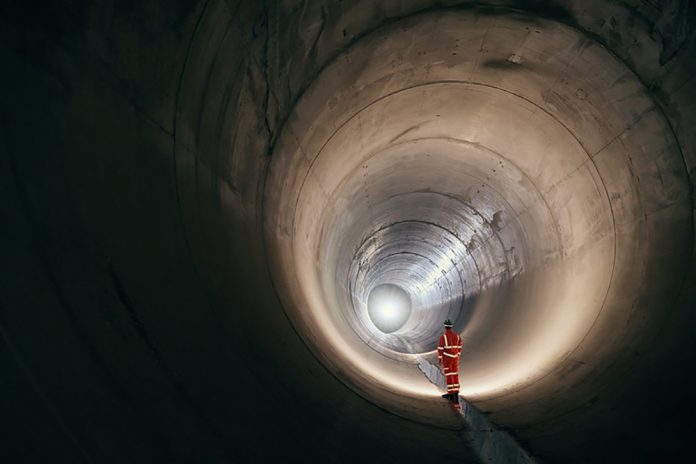Engineers on London’s super sewer project have begun work to connect the new infrastructure to the existing sewer system.
The 25km Thames Tideway Tunnel aims to dramatically improve the health of the River Thames by preventing sewage pollution.
The £5bn tunnel will capture sewage overflows that currently spill into the Thames when the system is overloaded.
Major construction work finished in March after a 1,200-tonne concrete ‘lid’ was lifted into place on top of the project’s deepest shaft at Abbey Mills Pumping Station in east London.
Now, the teams are preparing to bring the tunnel into service by making a connection to the 6.9km Lee Tunnel, which has been in operation since 2016.
The work involves breaking down and removing a thick wall separating the Lee Tunnel from the Thames Tideway Tunnel, to create a single system which will protect the entire tidal Thames.
Built from concrete and steel, the wall is 1.5m thick and around 8m2 – and sits 66m below ground.
The connection of the two tunnels needs to be completed to enable flows captured by the Thames Tideway Tunnel when in operation, to be transported to Beckton Sewage Treatment works for treatment.
At the same time, another team will be working on the construction of a new weir wall at the Beckton works.
To ensure the teams can work safely during these works, the Lee Tunnel had to be taken out of service for a period of approximately two weeks. The works were carefully sequenced to keep the work period to a minimum.
Once the super sewer and the Lee Tunnel have been joined together, the team will work toward switching the system on, with combined sewage overflow points along the Thames being connected in a sequence – this is the commissioning phase, which is when the new infrastructure will begin to protect the river from pollution.
Commissioning will take several months. The system will be tested in different weather conditions at half capacity and then full capacity, ahead of full operation, which is due in 2025, when the full protection benefits will be recognised.
The pipe will divert 34 of the most polluting outflows that discharge into the Thames. Capable of holding 600 Olympic sized swimming pools of sewage and storm water – which will be treated at the Beckton treatment work – the super sewer will be handed over to Thames Water after testing concludes this summer.



